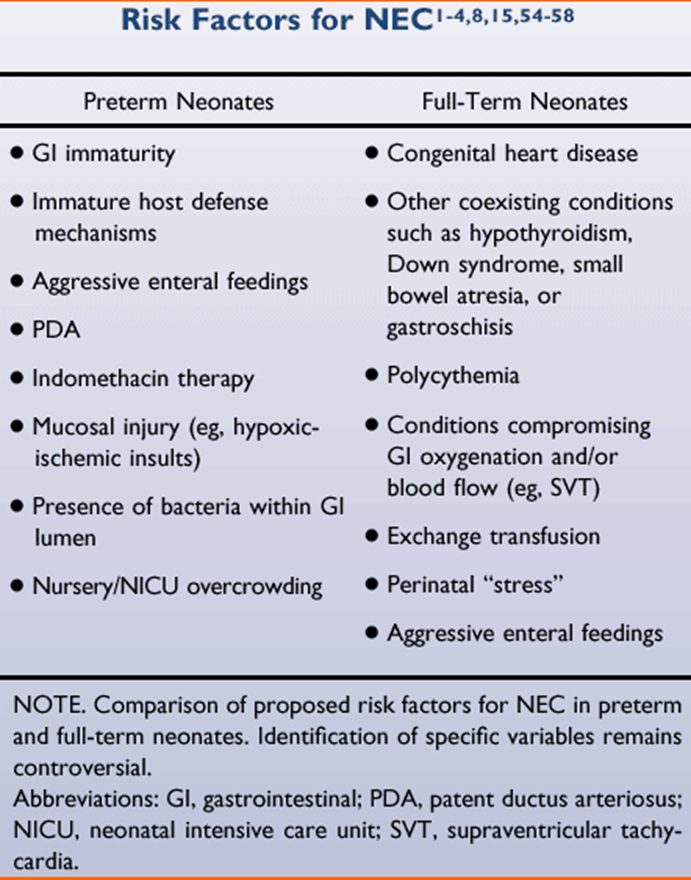A 30 weeks' gestation neonate born with low Apgar scores is in the neonatal intensive care unit with respiratory distress syndrome and underwent an exchange transfusion for anemia. Which factors place the neonate at risk for necrotizing enterocolitis? Select all that apply
hyperthermia
low Apgar scores
preterm birth
respiratory distress syndrome
exchange transfusion
hyperglycemia
Correct Answer : B,C,D,E
A. Hyperthermia is not typically associated with an increased risk of necrotizing enterocolitis.
B. Low Apgar scores indicate that the baby had difficulty adapting to life outside the womb and may have suffered from hypoxia or acidosis.
C. Preterm birth is a significant risk factor for necrotizing enterocolitis.
D. Respiratory distress syndrome is associated with prematurity and is a risk factor for necrotizing enterocolitis.
E. Exchange transfusion, a procedure often performed in neonates with severe jaundice or anemia, is associated with an increased risk of necrotizing enterocolitis.
F. Hyperglycemia is not typically associated with an increased risk of necrotizing enterocolitis.

Nursing Test Bank
Naxlex Comprehensive Predictor Exams
Related Questions
Correct Answer is D
Explanation
A. Teens who date frequently may experience fluctuations in self-esteem and autonomy, but it is not a universal trend and depends on various factors.
B. While mixed-sex group activities are common, many late adolescents do engage in dating relationships as couples.
C. Homosexual behavior during adolescence does not necessarily predict sexual orientation in adulthood, as sexual orientation can evolve over time.
D. Research indicates that by late adolescence, most teens have experienced at least one romantic relationship, whether short-term or long-term, reflecting a common developmental milestone.
Correct Answer is A
Explanation
A. Before answering questions, it's important to understand what the child already knows or thinks about the subject to provide developmentally appropriate information.
B. Expanding upon the topic when answering questions may overwhelm the child with too much information and may not be developmentally appropriate.
C. Providing a less than honest response may undermine trust between the parent and child and may not adequately address the child's curiosity or concerns.
D. Waiting until the child asks about a topic may miss opportunities for proactive, age-appropriate education and guidance.
Whether you are a student looking to ace your exams or a practicing nurse seeking to enhance your expertise , our nursing education contents will empower you with the confidence and competence to make a difference in the lives of patients and become a respected leader in the healthcare field.
Visit Naxlex, invest in your future and unlock endless possibilities with our unparalleled nursing education contents today
Report Wrong Answer on the Current Question
Do you disagree with the answer? If yes, what is your expected answer? Explain.
Kindly be descriptive with the issue you are facing.
